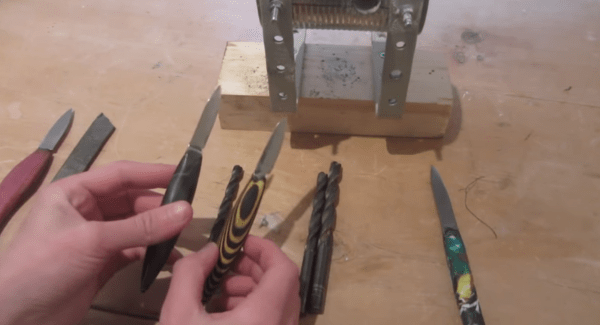That’s right. [Colin Furze] just made a household appliance obsolete. Who needs a toaster when you can cut your bread… and toast it at the same time!
Leave it to [Furze] to make something out of the Hitchhiker’s Guide to the Galaxy a reality. Submitted as an idea by one of his subscribers to his new series called Furze’s Invention Show, he took it upon himself to make the long revered lightsaber bread knife. We were waiting for this day.
Unfortunately, it’s not exactly a light saber. In fact, its more of a light-saw-ber, which, pronounced with the right accent could be easily mistaken for the real deal. Using a re-wrapped microwave transformer — much like home-made spot welder rigs — [Furze] is pumping a ton of amps at low voltage through a hacksaw blade, making it red hot and ready to toast bread.
Continue reading “The Greatest Thing Since (Toasted) Sliced Bread”


















